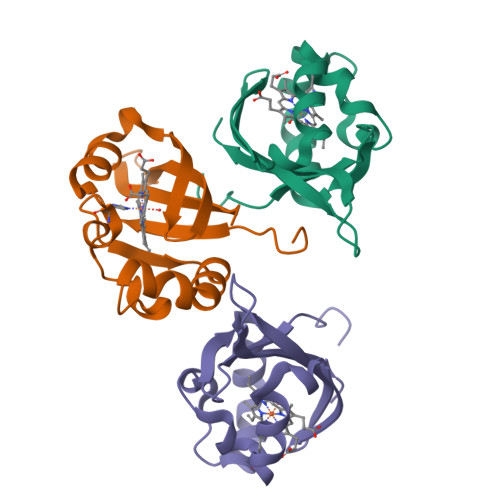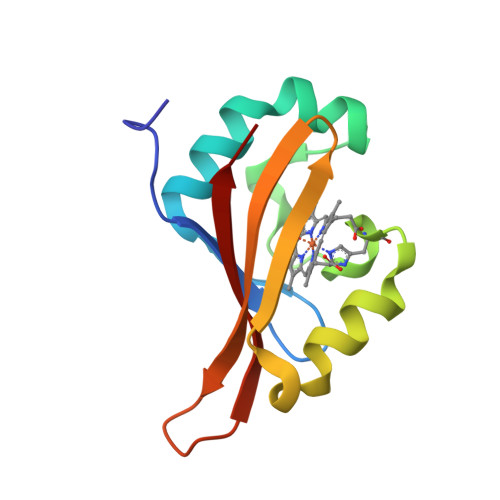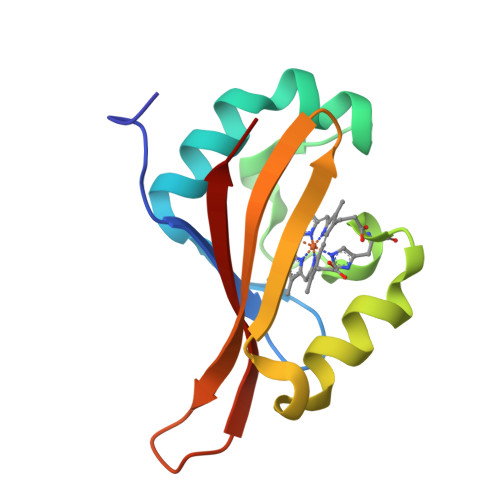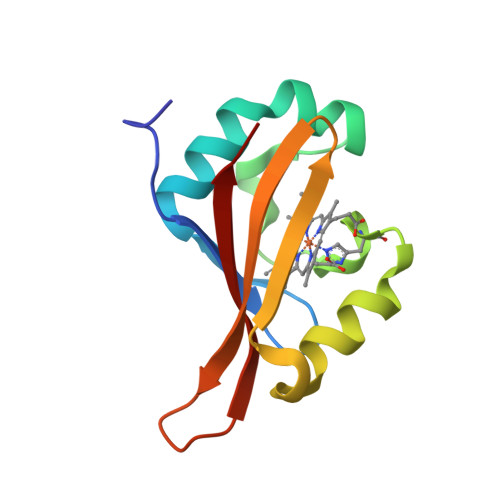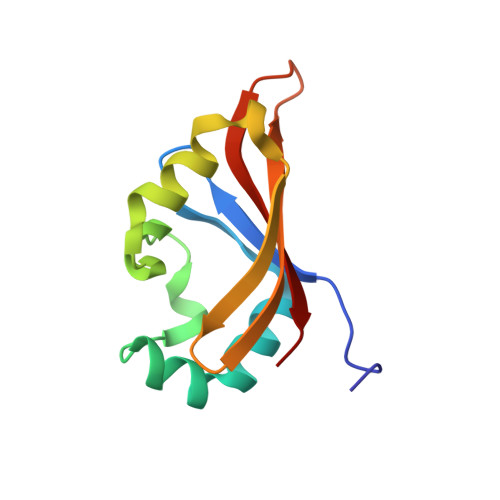THE AER2 RECEPTOR FROM VIBRIO CHOLERAE IS A DUAL PAS-HEME OXYGEN SENSOR.
Greer-Phillips, S.E., Sukomon, N., Chua, T.K., Johnson, M.S., Crane, B.R., Watts, K.J.(2018) Mol Microbiol
- PubMed: 29719085
- DOI: https://doi.org/10.1111/mmi.13978
- Primary Citation of Related Structures:
6CEQ - PubMed Abstract:
The diarrheal pathogen Vibrio cholerae navigates complex environments using three chemosensory systems and 44-45 chemoreceptors. Chemosensory cluster II modulates chemotaxis, whereas clusters I and III have unknown functions. Ligands have been identified for only five V. cholerae chemoreceptors. Here, we report that the cluster III receptor, VcAer2, binds and responds to O 2 . VcAer2 is an ortholog of Pseudomonas aeruginosa Aer2 (PaAer2) but differs in that VcAer2 has two, rather than one, N-terminal PAS domain. We have determined that both PAS1 and PAS2 form homodimers and bind penta-coordinate b-type heme via an Eη-His residue. Heme binding to PAS1 required the entire PAS core, but receptor function also required the N-terminal cap. PAS2 functioned as an O 2 -sensor [
d( O 2 ) , 19 μM], utilizing the same Iβ Trp (W276) as PaAer2 to stabilize O 2 . The crystal structure of PAS2-W276L was similar to that of PaAer2-PAS but resided in an active conformation mimicking the ligand-bound state, consistent with its signal-on phenotype. PAS1 also bound O 2 [d( O 2 ) , 12 μM], although O 2 binding was stabilized by either a Trp residue or Tyr residue. Moreover, PAS1 appeared to function as a signal modulator, regulating O 2 -mediated signaling from PAS2 and resulting in activation of the cluster III chemosensory pathway.
Organizational Affiliation:
Division of Microbiology and Molecular Genetics, Loma Linda University, Loma Linda, CA, 92350, USA.








